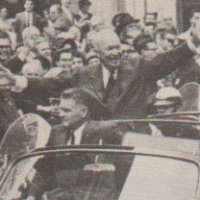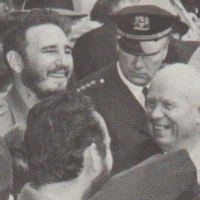 SKC Films Library SKC Films Library |
|
|
| SKC Films Library
>> Political Science
>> International Relations |
| The United Nations in 1960 During 1960 the membership of the United Nations increased from 82 to 99, with all but one of the new states being African. The 15th session of the General Assembly that convened on September 20, 1960 was a unique gathering in that it brought together the heads of state of many of its member states. The agenda proposed for the meeting, consisting of 87 topics, was also the longest in the history of the United Nations. At that opening, 14 new nations were admitted as members, the largest single addition since the UN's founding in 1954. Three more members were added before the general debate ended on October 17. The session also witnessed for the first time a serious challenge to the organization of the UN itself when Soviet Premier Nikita Khrushchev proposed that the office of Secretary-General be replaced by a three-man executive board similar to the Soviet Presidium. The Session (and Reactions to It) in Pictures Maurice Couvre de Murville,
Foreign Minister of France, addressing the opening
session, September 20. left: U.S. President Dwight
Eisenhower was the first chief of state to
speak before the General Assembly, on September 22. In
his address he proposed a program for safeguarding the
security of newly independent African nations. left: Fidel
Castro, Premier of Cuba. left: Castro at the rostrum
on September 26, when he delivered a 4-1/2-hour speech,
which was largely an attack on U.S. policies. left: Castro's personal
bodyguards, New York City policemen equipped with
automatic rifles. About 8,000 police officers were
assigned to the protection of foreign leaders during the
UN session. left: Longshoremen of the New
York water front picketing the Soviet liner
"Baltika" (just visible at the top of the
picture), which brought Khrushchev and other Communist
leaders to the city. left: Premiers Castro and
Khrushchev during one of their several meetings while the
two leaders were in New York City. Leaders of the Hungarian
delegation at their desks; First Secretary of the
Hungarian Communist Party Janos Kádár is at left,
Minister of Foreign Affairs Endre Sik at right. Wladyslaw Gomulka, First
Secretary of the Polish Communist Party King
Hussein of Jordan addressing the General
Assembly on October 3. Some of the members of the
Afro-Asian bloc who met as "neutralists" and
proposed that a renewed effort be made to bring together
for conferences U.S. President Dwight Eisenhower and
Soviet Premier Nikita Khrushchev. At this meeting on
October 4 were (left to right): Saeb Salam, Prime
Minister of Lebanon; Gamal
Abdel Nasser, President of the United Arab
Republic; Kwame Nkrumah, President of Ghana; U
Thant, Ambassador to the UN from Burma; and Jawaharlal
Nehru, Prime Minister of India. One of the many informal
sessions which were held among various national leaders.
Prime Minister Nehru (white hat) may be identified in
this group, which met in a lounge at UN headquarters. left: Jawaharlal Nehru, Primce
Minister of India left: Sir Abubakar Balewa,
Prime Minister of Nigeria left: John
Diefenbaker, Prime Minister of Canada PRINT SOURCE SEE ALSO |
SKC Films Library >> Political Science >> International Relations This page was last updated on 01/31/2017. |


























